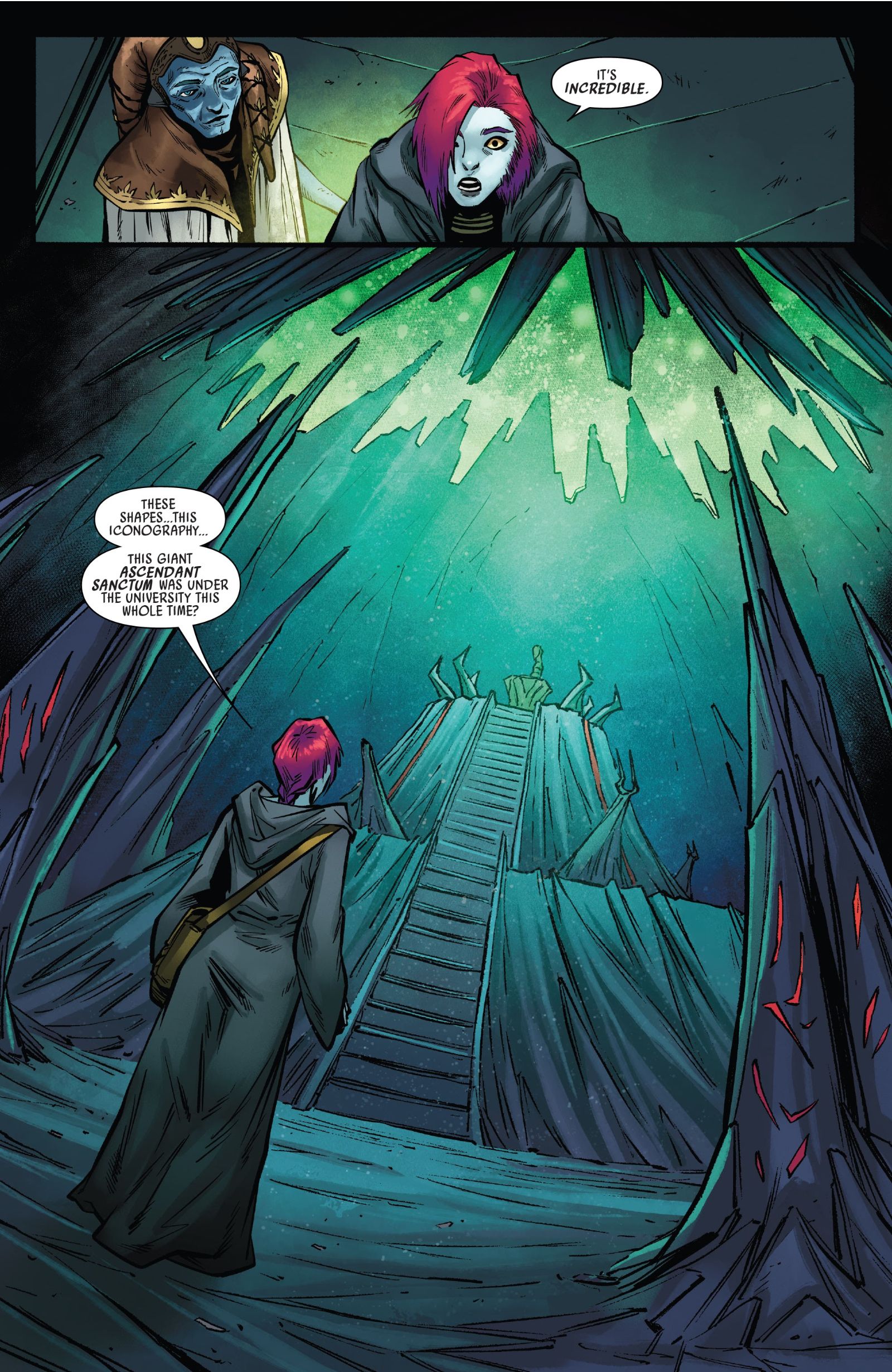Warning! Major spoilers for the Doctor Aphra series ahead!
In the most recent Doctor Aphra comics, Star Wars introduced artifacts owned by a mysterious cult known as the Ascendant. One of these ancient components is known as the Spark Eternal, which has the ability to grant non-Force-sensitives powers shrouded in the dark side. While most fans await the conclusion of this comic run for the ultimate answer, it raises one vital question: Is this finally the end of midi-chlorians?
In Star Wars: Episode I – The Phantom Menace, Qui-Gon Jinn takes the young Anakin Skywalker’s blood sample. The Jedi Master asks his Padawan Obi-Wan Kenobi for Anakin’s midi-chlorian count, measuring how Force-sensitive he is. Obi-Wan responds: “Strange. The transmission seems to be in good order, but the reading’s off the chart… over twenty thousand. Even Master Yoda doesn’t have a midi-chlorian count that high!” Midi-chlorians are microscopic organisms that live in the cells of life forms, connecting the beings to a “cosmic force.” Their creation in The Phantom Menace was one of several reasons many fans were upset with George Lucas’ direction in the prequels. During the Original Trilogy, the Force was simply a mystical religion anyone could practice. However, the prequels turned the Force into a measurable biological element.
The alteration of midi-chlorians didn’t technically change anything about the Original Trilogy, but the prequels replaced the mystique of the Force with physical science. This is why, for the most part, Star Wars currently strays away from the controversies of midi-chlorians. Nevertheless, the Ascendant’s constructions could face the term head-on for the first time since Disney first bought the franchise. In Alyssa Wong and Minkyu Jung’s Doctor Aphra #19, Kho Phon Farrus, Aphra’s nemesis and fellow archeologists from the University of Bar’leth, finally discovers the Spark Eternal, allegedly the Ascendant’s deadliest artifact. The Spark has the power to forge mental prisons and allow non-Force-sensitives to dominate minds. Though the Spark is still shrouded in mystery, these Force-related weapons have the power to contradict the understanding of midi-chlorians. While the Ascendant weapons grant anyone with dark side abilities, midi-chlorians limit the Force to an individual’s biology.

Aphra, who has little to no midi-chlorians, used the Ascendant’s thought dowser herself in Wong and Jung’s Doctor Aphra #15. After using it, she states that if a Force-sensitive user, like Darth Vader, wields a thought dowser, “the effect would be crushing.” The Ascendant artifacts don’t merely grant a user Force powers; the objects reward those already powerful in the Force with exponential greatness. For instance, if Darth Vader did manage to wield the thought dowser, he could potentially take out the Emperor with ease. Now that any character can potentially use the Force, midi-chlorians are officially not the only way to measure the Force.
If the Force is accessible to anyone via physical items, midi-chlorians seem less reasonable in the lore. The Ascendant’s artifacts will likely open up new ways to use the Force and how to tie certain materials to it. Time will only tell how comics will continue to influence the galaxy far far away. Star Wars comics like Doctor Aphra won’t only update Lucas’ original vision of the Force; they’ll also rework the overall importance of midi-chlorians.




